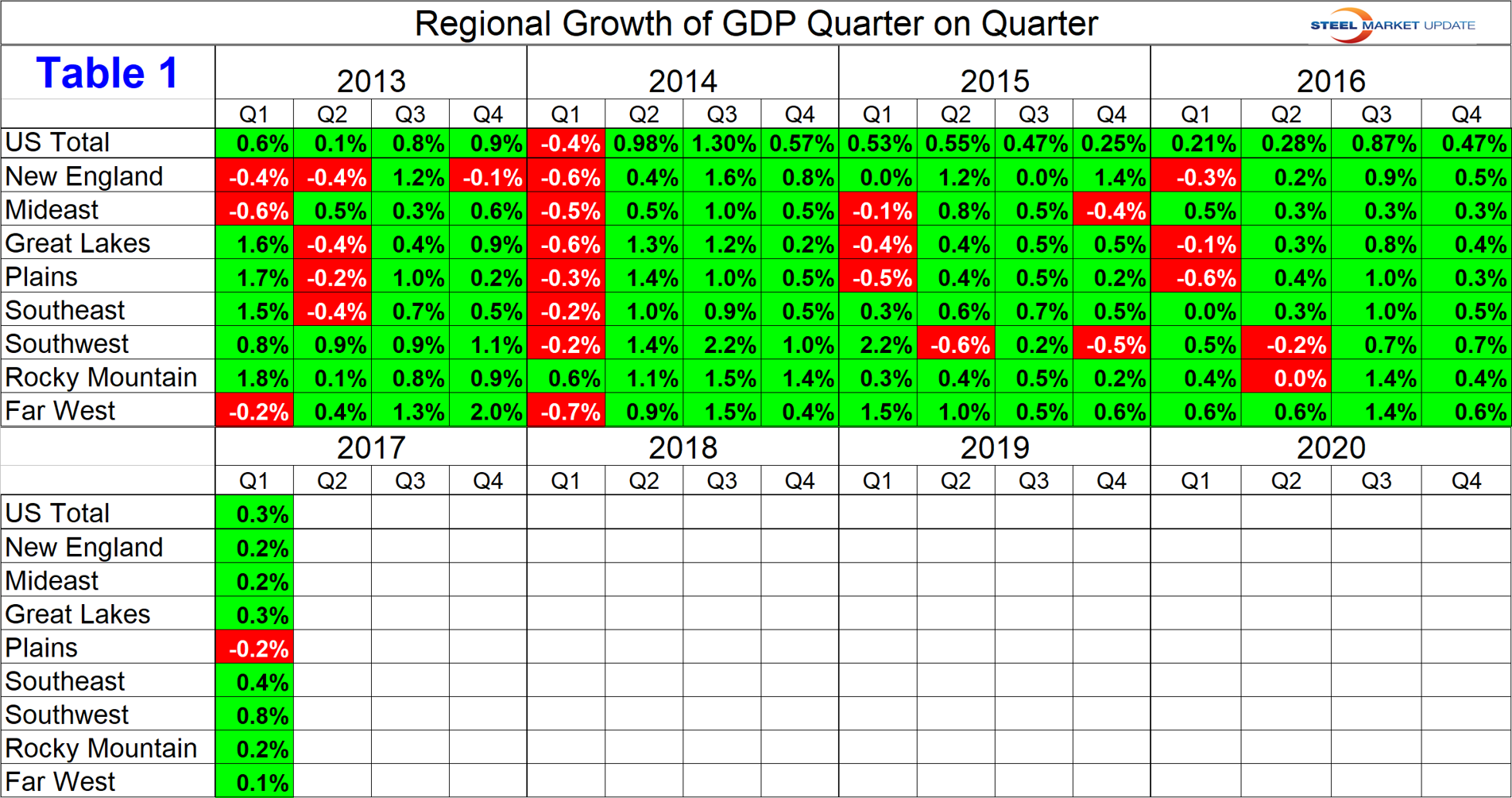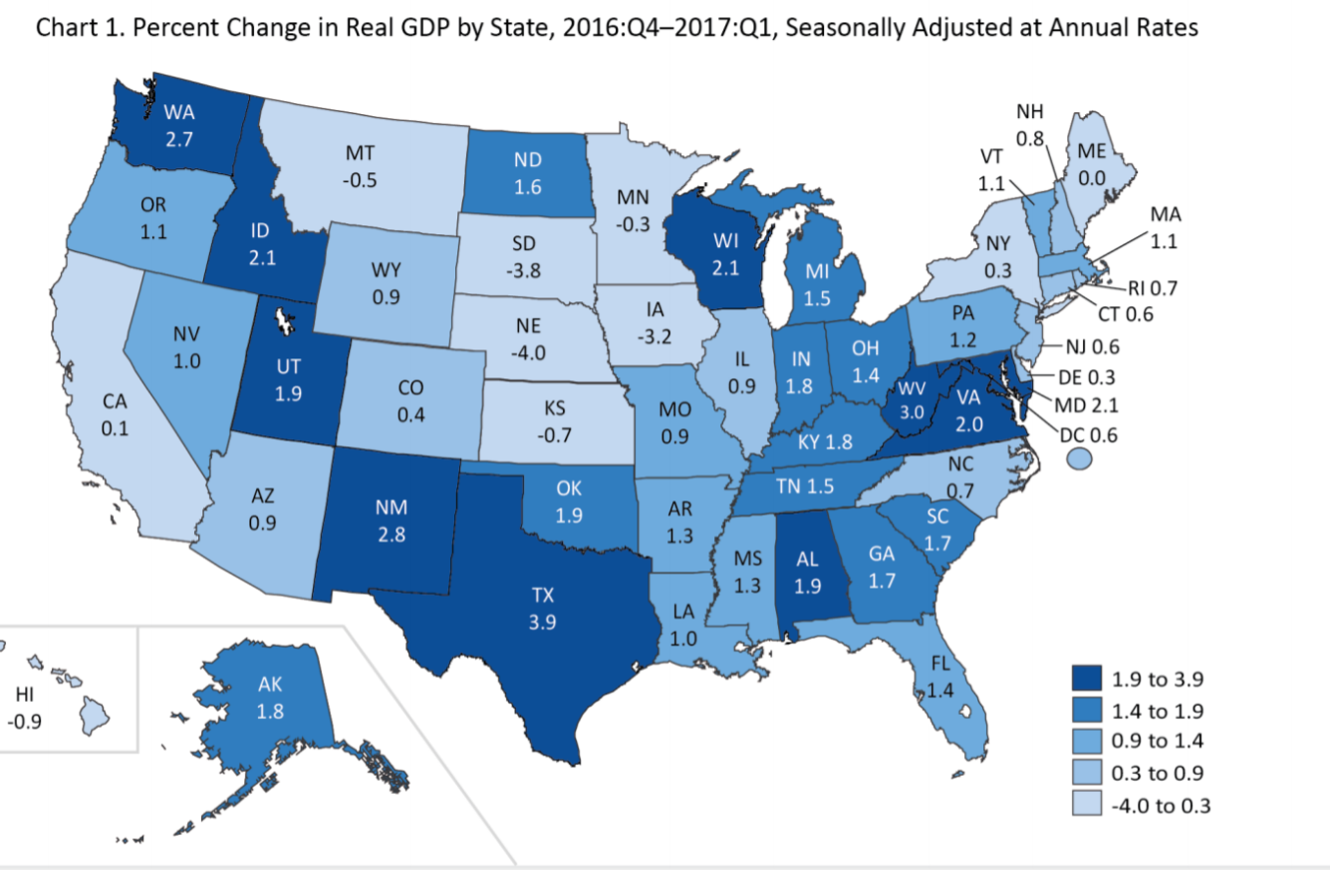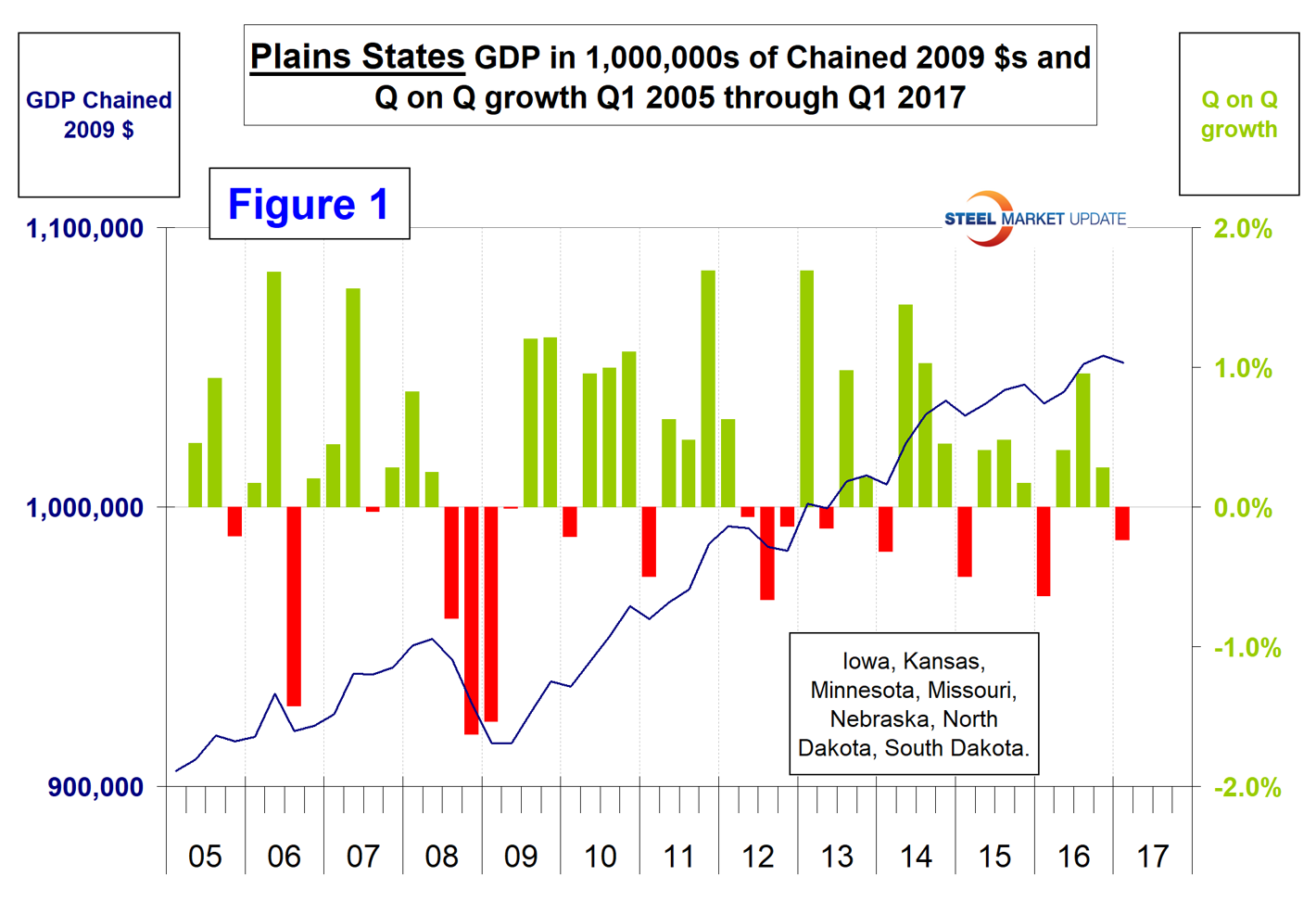Economy

GDP Grows in Most Regions in Q1
Written by Peter Wright
August 18, 2017
Gross domestic product grew in every region except the Plains States in Q1 2017.
The Bureau of Economic Analysis (BEA) introduced a new data set for GDP by state and region in 2014 and backdated it to Q1 2005. This week, the data was updated through Q1 2017. Even though we might consider this to be historically “old,” we think it’s worth reporting because it is a foundation for where we are now. The data is published quarterly and is reported in chained 2009 dollars seasonally adjusted. We at SMU analyze the data and report to our subscribers quarterly by region. Should anyone wish to see data and graphs for an individual state, we will supply them on request.
Table 1 shows the growth of regional GDP in chained 2009 dollars quarter on quarter. (These numbers are not annualized as is the case for published reports of the growth of national GDP.) In the 3rd and 4th quarters of 2016, every region had positive growth. Except for the Plains States, this continued into Q1 2017.
The BEA produces a map of the United States showing Q/Q growth by state within each region. We have included here the map for Q1 2017 extracted from the BEA website to enable readers to see how their individual states progressed between Q4 2016 and Q1 2017. Texas had the highest growth rate at 3.9 percent and Nebraska the lowest at negative 4.0 percent.
Regions as defined by the BEA are as follows:
New England—Connecticut, Maine, Massachusetts, New Hampshire, Rhode Island, Vermont.
Mideast—Delaware, D.C., Maryland, New Jersey, New York, Pennsylvania.
Great Lakes—Illinois, Indiana, Michigan, Ohio, Wisconsin.
Plains—Iowa, Kansas, Minnesota, Missouri, Nebraska, North Dakota, South Dakota.
South East—Alabama, Arkansas, Florida, Georgia, Kentucky, Louisiana, Mississippi, North Carolina, South Carolina, Tennessee, Virginia, West Virginia.
South West—Arizona, New Mexico, Oklahoma, Texas.
Rocky Mountain—Colorado, Idaho, Montana, Utah, Wyoming.
Far West—Alaska, California, Hawaii, Nevada, Oregon, Washington.
In Q1 2017, the South West had the highest growth rate, which was double the growth of second-place South East.
Once a quarter, we at SMU publish a report of regional job creation, which we hope, along with this analysis of regional GDP, enables subscribers to compare their own corporate results with those of their region to establish whether they are swimming up or down stream.
Figure 1 is intended to show readers an example of the graphs that we can produce on request for individual regions and states.
The U.S. values in this report are different and lower than the official numbers published in the National Income and Product Account (NIPA) reports partly because the GDP-by-state numbers exclude federal military and civilian activity located overseas (because it cannot be attributed to a particular state). The official quarterly report of national GDP is also annualized, which as we always report in our quarterly analysis increases the value by a factor of four.

Peter Wright
Read more from Peter WrightLatest in Economy

Beige Book: Tariff pressures mount, flat outlook
All districts reported “experiencing modest to pronounced input cost pressures related to tariffs, especially for raw materials used in manufacturing and construction.”

Steel exports recovered in May but still historically low
US steel exports rose 10% from April to May but remained low compared to recent years. This came just one month after exports fell to the lowest level recorded in nearly five years.

AISI: Raw steel production ticks up near recent high
The volume of raw steel produced by US mills inched higher last week, according to the American Iron and Steel Institute (AISI). After steadily increasing in April and May, domestic mill output stabilized in early June and has remained historically strong since.

Steel groups welcome passage of budget bill
Steel trade groups praised the passage of the Big Beautiful Bill (BBB) in Congress on Thursday.

Industry groups praise Senate for passing tax and budget bill
The Steel Manufacturers Association and the American Iron and Steel Institute applauded the tax provisions included in the Senate's tax and budget reconciliation bill.



